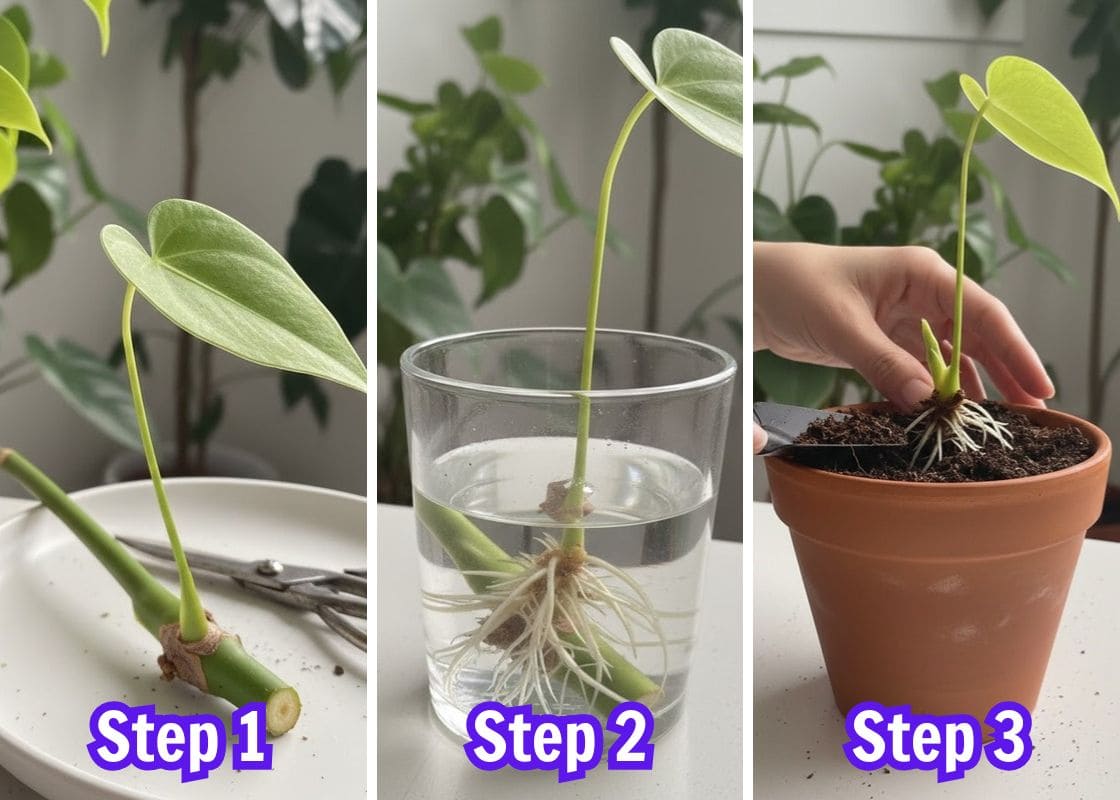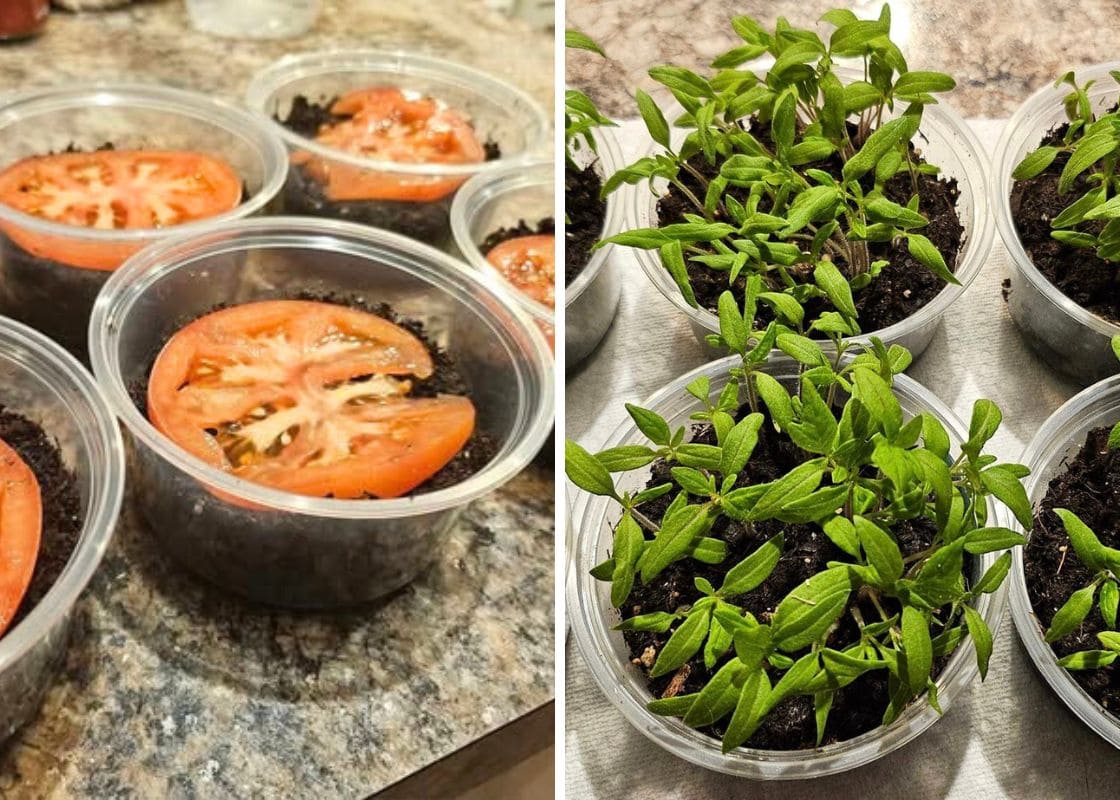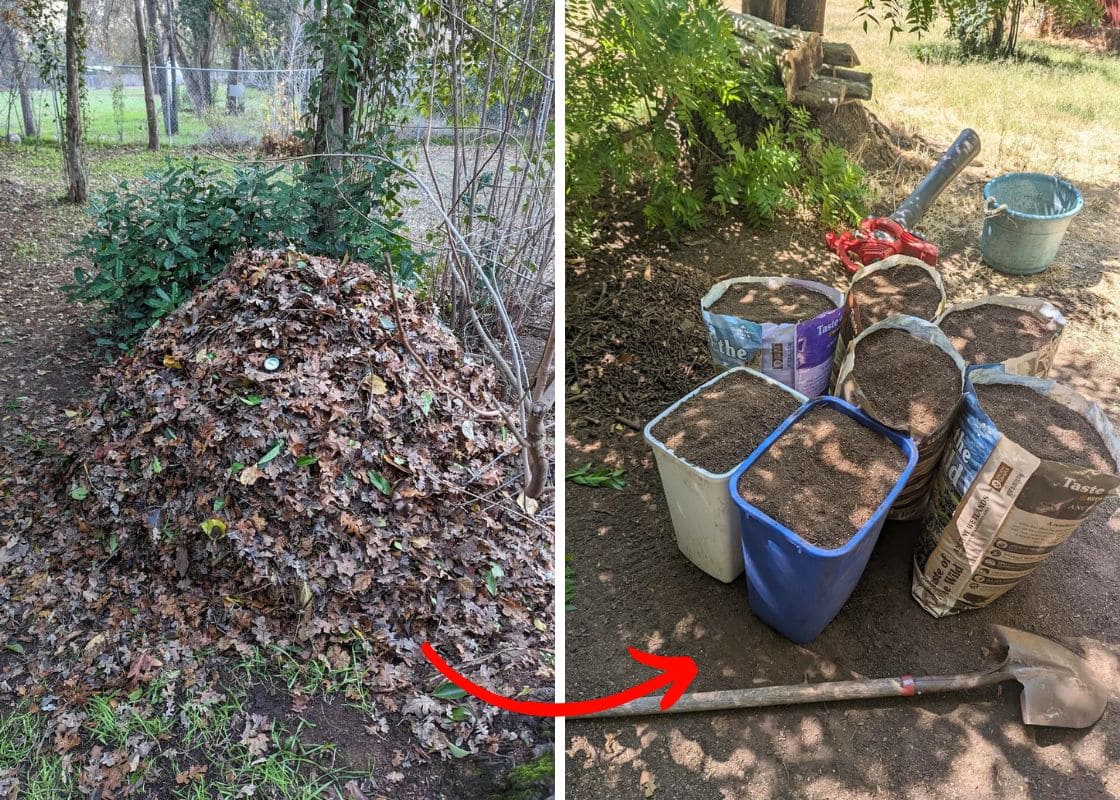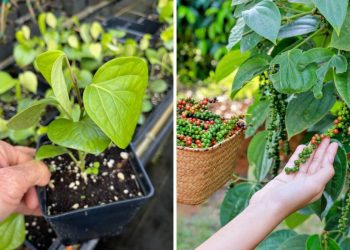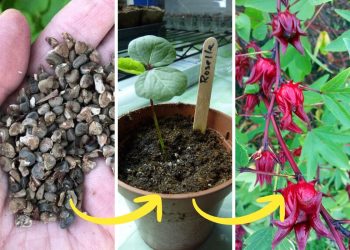Are you looking for an attractive, low-maintenance plant to enhance your garden or home? The foxtail fern might be just what you need.
Known for its feathery, plume-like foliage and vibrant green color, this perennial evergreen is a favorite among gardeners for its ability to thrive in a variety of conditions.
In this guide, you’ll learn everything about growing Foxtail Ferns. From ideal light and soil conditions to watering needs and propagation methods, we cover it all.
Whether you plant them outdoors or keep them as indoor houseplants, our tips will help ensure your Foxtail Ferns remain healthy and beautiful year-round.

| Botanical Name | Asparagus densiflorus |
| Common name | Foxtail Fern, Emerald Fern, Asparagus Fern |
| Plant Type | Perennial |
| Mature Size | 2-3 ft. tall, 2-3 ft. wide |
| Sun Exposure | Partial |
| Soil | Well-draining soil with acidic, neutral pH |
| Flower Color | White |
| Blooming Season | Spring |
| Hardiness Zones | 9a-11a |
| Toxicity | Toxic to humans and pets |
Propagation
The best time to propagate foxtail fern is in early spring or fall when the plant is not actively growing. You’ll need a sharp knife or garden spade, a clean pot or planting area, and fresh potting soil.
Start by carefully digging up the foxtail fern, ensuring you don’t damage the roots. Shake off excess soil and use your knife or spade to divide the root ball into smaller sections, each with a good number of roots and shoots.
Plant each division in well-draining soil, either in pots or directly in the garden, and water them thoroughly.
After propagation, place the new plants in a shaded area for a few days to help them acclimate. Keep the soil consistently moist but not waterlogged.

Growing Foxtail Fern
Preparation
- Fresh Foxtail Fern seeds
- Seed tray or small pots
- Seed-starting mix
- Clear plastic cover or plastic wrap
- Spray bottle for misting
- Filtered or distilled water
Use fresh foxtail fern seeds, which should be dark brown to black and uniform in size. Soak the seeds in filtered or distilled water for 24 hours to soften their shells, aiding germination.
Fill your seed tray or small pots with a seed-starting mix containing peat moss or coconut coir and perlite or vermiculite. Slightly moisten the mix before planting; it should be damp but not waterlogged.
Planting Foxtail Fern from Seeds
Gently scatter the soaked seeds on the soil surface and lightly press them in to ensure good contact. Do not cover them deeply, as they need light to germinate.
Cover the tray or pots with a clear plastic cover or wrap to retain moisture and create a greenhouse-like environment. Place the covered tray in a warm spot with bright, indirect sunlight, maintaining a temperature of 70-75°F (21-24°C).
Keep the soil consistently moist by misting it with water, ensuring it remains damp but not saturated. Germination can take between two to eight weeks.
Once seedlings develop their first set of true leaves, transplant them into individual pots with well-draining soil. Handle the seedlings gently, planting them at the same depth they were in the seed tray.
Tips: For outdoor planting, pair foxtail ferns with shade-loving companions like Hostas, Heucheras, Astilbes, and Begonias for a lush, diverse garden.
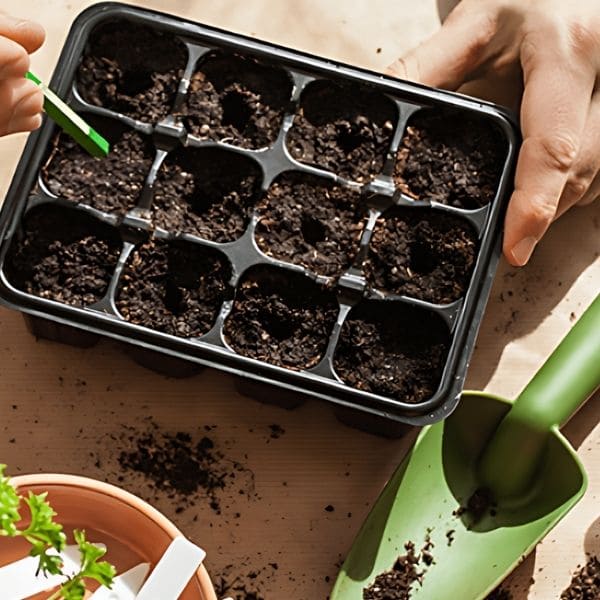
Care for Foxtail Fern
Here are main requirements for growing foxtail fern effectively:
- Prefers partial shade to full sun; bright, indirect light indoors.
- Keep soil consistently moist but not waterlogged.
- Requires well-draining, fertile soil.
- Use a balanced, slow-release fertilizer; feed in spring and mid-summer.
- Remove yellowing or dead fronds to maintain shape.
- Repot every 2-3 years.
- Provide plenty of room to grow for optimal health.
Soil
Foxtail ferns thrive in well-draining, fertile soil. A mix of peat moss or coconut coir, perlite, and compost works best. The soil should be slightly acidic to neutral, with a pH between 6.0 and 7.0.
Proper soil ensures healthy growth and vibrant foliage. Avoid waterlogged soil, as it can lead to root rot. Adding organic matter improves soil fertility and drainage.
Light
Foxtail ferns prefer partial shade to bright, indirect light. They thrive in dappled sunlight, which helps maintain their lush, green foliage.
In hot climates, avoid full sun to prevent leaf scorch. In cooler climates, they can tolerate more direct sunlight. Indoors, position them near a bright window but out of direct sunlight.
Water
Foxtail ferns have tuberous roots that store water, making them somewhat drought-tolerant once established. However, they still need consistent moisture.
Water the plant thoroughly when the top inch of soil feels dry, usually once a week. Early morning is the best time to water, allowing any excess moisture to evaporate during the day.
Check the soil regularly to avoid overwatering, as soggy soil can lead to root rot.
Temperature and Humidity
Foxtail ferns thrive in temperatures between 60-75°F (15-24°C) and prefer higher humidity levels. They grow best in USDA zones 9-11. These conditions help maintain their lush, green foliage and overall health.
If temperatures drop below 50°F (10°C), the plant may suffer damage. Indoors, you can increase humidity by misting the fern regularly or using a humidity tray.
Fertilizer
To keep your foxtail fern healthy and vibrant, use a balanced, slow-release fertilizer with an N-P-K ratio of 10-10-10.
Apply the fertilizer in the spring and again in mid-summer. Sprinkle the fertilizer around the base of the plant and gently work it into the soil.
Be careful not to over-fertilize, as this can cause root burn and damage the plant. Over-fertilizing can lead to yellowing leaves and stunted growth.
Repotting
Choose a pot with good drainage that’s slightly larger than the current one to give the roots room to grow. The best time to repot is in early spring, before the growing season starts.
Gently remove the fern from its old pot, shake off excess soil, and place it in the new pot with fresh, well-draining soil. Avoid disturbing the roots too much.
Repotting every 2-3 years helps prevent rootbound issues and ensures your fern stays healthy and vibrant.

Pests and Diseases
Foxtail Ferns are generally hardy but can sometimes be affected by pests and diseases. Common pests include aphids and scale insects, which can cause yellowing and wilting leaves. To combat these pests, use insecticidal soap or neem oil, applying it thoroughly to the affected areas.
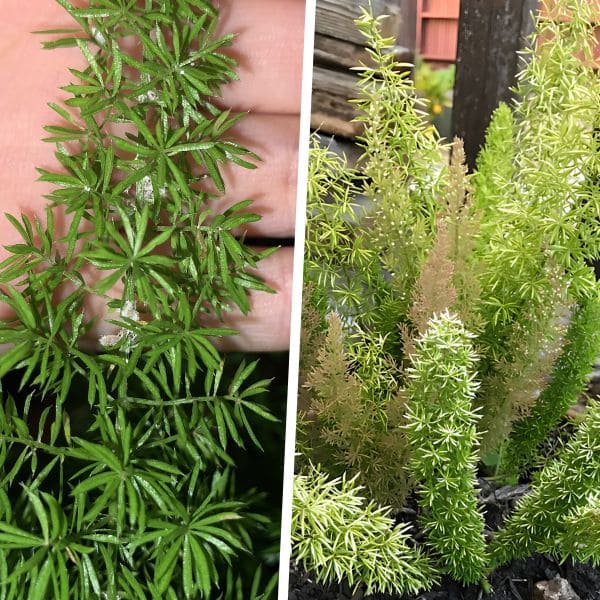
Foxtail Ferns can also suffer from fungal diseases, often due to overwatering or poor drainage, leading to root rot. Ensure the soil is well-draining and avoid waterlogging by checking soil moisture regularly. If root rot occurs, trim away the affected roots and repot the fern in fresh, dry soil.
Common Problems
Yellowing Leaves
Yellowing leaves often indicate overwatering or poor drainage. If leaves turn yellow and begin to drop off, the roots might be sitting in water for too long.
Ensure your soil is well-draining and allow the top inch to dry out before watering again. Reduce watering frequency and check that your pot has adequate drainage holes to prevent this issue.
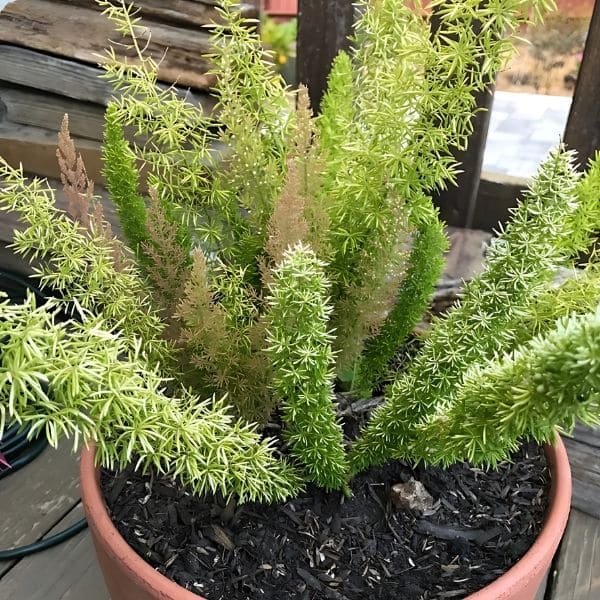
Leggy Growth
Leggy growth occurs when stems become long and spindly with fewer leaves, typically due to insufficient light. The plant stretches towards the light, resulting in elongated stems.
To fix this, move your foxtail fern to a spot with bright, indirect light. Indoors, place it near a bright window to ensure it receives the light needed for healthy, bushy growth.
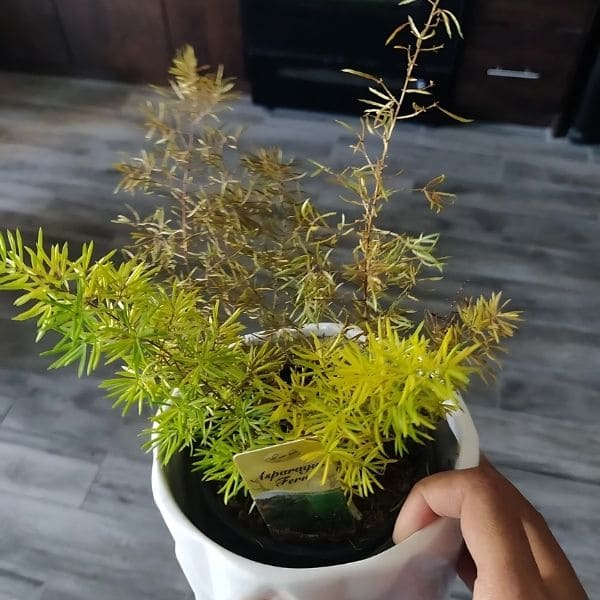
Stunted Growth
Stunted growth, where the plant stops growing or grows very slowly, can be due to a nutrient deficiency or being root-bound.
Address nutrient deficiencies by fertilizing with a balanced, slow-release fertilizer in the spring and mid-summer. If the plant is root-bound, repot it into a larger container with fresh, well-draining soil to give the roots more space and help the plant thrive.
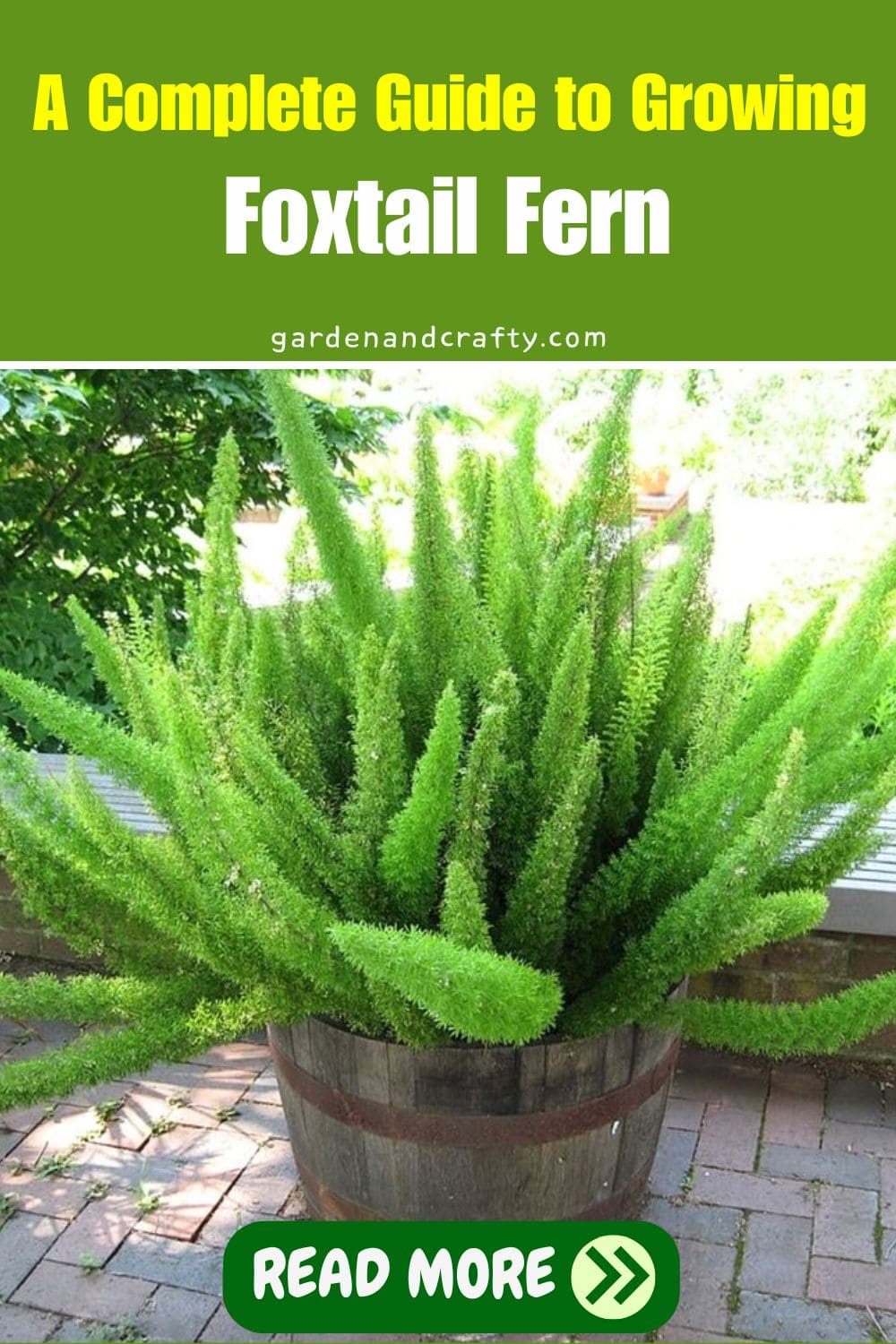
Growing foxtail ferns is rewarding and relatively easy, perfect for both novice and experienced gardeners. However, the plant contains toxic compounds that can be harmful if ingested by pets or humans.
The berries and foliage can cause gastrointestinal issues if consumed, and handling the plant without gloves may lead to skin irritation. Wash your hands after handling the plant and keep it out of reach of children and pets.

